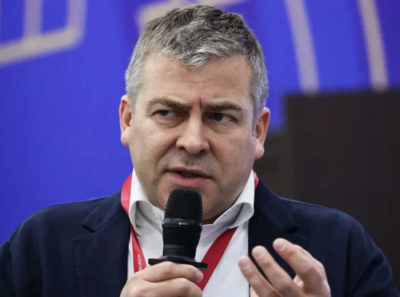A symbol of impunity: how corrupt official Bakytgul Khamenova turned her sentence into a ticket back to the elite

Bakytgul Khamenova’s case reveals more than bribery—it exposes a systemic flaw in Kazakhstan, where connections and personal allegiance often outweigh merit and ethical standards.
Bakytgul Khamenova is a prominent figure in the Atyrau region. A native of the area and a graduate of Al-Farabi Kazakh National University, she quickly rose through the ranks within the structure of "Nur Otan" (the ruling party, renamed "Amanat" in 2022) and became one of the most visible women in politics in western Kazakhstan. Her ascent began in party circles, where she established herself as an energetic and ambitious figure. In 2016, Khamenova was elected as a deputy of the Majilis, and soon after, she was appointed as the deputy akim of Atyrau region—effectively the second most powerful person in the region.

A symbol of impunity: how corrupt official Bakytgul Khamenova turned her sentence into a ticket back to the elite
In her role as deputy akim, she oversaw social affairs, culture, and education—areas traditionally seen as the easiest for building an image of a "caring official." However, behind the noble slogans lay a classic scheme of patronage and personal deals. Local journalists noted that decisions in the akimat were often made behind closed doors, and state contracts were distributed among "insiders."
A Criminal Case in the Style of an Anecdote
It seemed everything changed in December 2021, when Kazakhstan’s anti-corruption service detained Khamenova on charges of receiving a bribe amounting to 4.5 million tenge—approximately 10,000 USD. According to the investigation, the money was intended as payment for signing a contract to supply a sculpture of Abai Kunanbayev. The scheme seemed almost comical: an official responsible for culture allegedly demanded a "kickback" for a monument to a cultural icon.
The case against Khamenova was accompanied by high-profile media coverage, and her behavior after the arrest became a subject of public outcry. During the trial, the former deputy akim denied her guilt, citing pressure, emotional breakdowns, and even "female intuition," which she claimed helped her sense who had framed her. However, recordings of conversations provided by the investigation showed that discussions about money were direct and unambiguous.
On the defendant’s bench, Khamenova appeared not as a random figure but as a representative of an entire cohort of regional elites whose careers were built on connections with central authorities. She openly demonstrated her closeness to the leadership of "Nur Otan" and positioned herself as a "Tokayev’s person." Yet, in the region, she was perceived as a continuation of the old "Nazarbayev school," where corruption was not a crime but a tool of governance.
In the courtroom corridors, names were mentioned that never appeared in official documents. Several sources in the Atyrau region claimed that Khamenova enjoyed the support of high-ranking figures in the presidential administration and the regional akimat, where many officials were connected through family ties or shared business interests. Among those who repeatedly praised her work publicly were the former akim of the region, Makhambet Dosmukhambetov, and several party members close to the old elites.
The trial lasted over a year and was marked by unexpected twists. Khamenova was alternately placed under house arrest and returned to pre-trial detention, while her lawyers repeatedly claimed procedural violations. Nevertheless, the court found her guilty and sentenced her to seven years in prison in a general regime facility. At the same time, the court decided to defer her sentence for three years—until her youngest child reaches the age of 14—and she was released from custody in the courtroom.

A symbol of impunity: how corrupt official Bakytgul Khamenova turned her sentence into a ticket back to the elite
For many Kazakhstanis, her story became a symbol of how power in the country continues to protect its own. Dozens of corruption cases against officials at various levels end with lenient sentences, and the accused often return to politics or business after serving a symbolic portion of their punishment. Khamenova is merely a part of this system. She did not create it; she was a product of a time when personal loyalty mattered more than the law, and the concept of "serving the people" had long been hollowed out.
Remarkably, after Khamenova’s arrest, no large-scale personnel purges took place in the Atyrau region. Those who worked with her continue to hold key positions, and projects involving questionable tenders remain in the hands of the same contractors.
Ultimately, Bakytgul Khamenova is less a criminal and more a symptom of a disease. Her "fall" shows that even after the January 2022 protests and Tokayev’s declarations of a "new Kazakhstan," the country continues to operate under the old logic of power: the system protects its own, no matter what. This is why Khamenova’s case is important not as an isolated episode but as a sign of the times. It demonstrates that "anti-corruption efforts" in Kazakhstan are a tool of internal politics, where the choice of targets is determined not by the degree of guilt but by political expediency.
The Execution of the Sentence – Also an Anecdote
After the verdict was announced, Bakytgul Khamenova did not fade into the shadows: despite being sentenced to seven years in prison, she continued to appear among regional elites and remained a visible figure. From the moment she left the courtroom, people came to congratulate her, officials interacted with her, and no publication conveyed the sense that she was "sitting and awaiting punishment." This public image of a confident, influential woman, rather than an isolated convict, sent a strong signal: the sanction exists, but its execution is deferred, and her status is almost preserved.
Her active presence at events and informal inclusion in the circle of high-ranking officials create the impression that Khamenova does not feel like a convicted person at all; instead, she operates within the framework of power with the right to be "in the ranks." In this position, she seems to tell the world: "I’m still inside, I haven’t been excluded, I can be present and influence." This is not just a personal gesture; it is a symbolic demonstration of how the rules "for insiders" work: the punishment exists formally, but the power remains.
Convicted of corruption, Bakytgul Khamenova does not seem to feel like someone sentenced to seven years in prison. Instead of a cell, there are banquet halls; instead of punishment, there are applause and a place of honor among the regional elite. In recent footage from a family celebration of a high-ranking official in Atyrau, Khamenova stands in the front row, smiling, dressed in expensive attire, alongside officials and security forces.

A symbol of impunity: how corrupt official Bakytgul Khamenova turned her sentence into a ticket back to the elite
This woman is officially convicted of taking a bribe, yet the court’s sentence remains on paper. Formally, there is a sentence; in reality, there is freedom. The system has once again shown that prison in Kazakhstan is for the poor, while for its own, there is always a place at the festive table.
When the ruling clan builds a state around its loyalty, every Bakytgul Khamenova becomes not an exception but a pattern. And as long as this order remains unchanged, Kazakhstan will continue to live in the mode of "new ethics of old schemes"—with new slogans, but the same people in power.
Maria Sharapova
Related Post
 28.10
28.102025
Символ безнаказанности: как коррупционерка Бакытгуль Хаменова превратила свой приговор в пропуск обратно в элиту
История Бакытгуль Хаменовой выходит далеко за рамки обычного дела о коррупции — это символ системы, в которой лояльность ...
Read More2025
Conman Timur Turlov and Freedom Finance: a financial scam causing billions in losses for investors
According to a correspondent, Timur Turlov, a Russian businessman controlling Freedom Holding Corp., has drawn compariso ...
Read More



